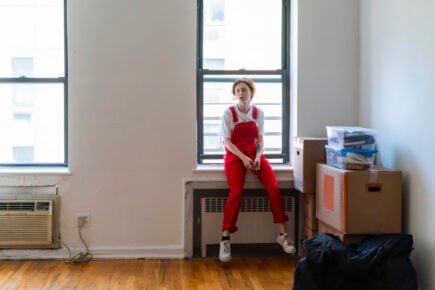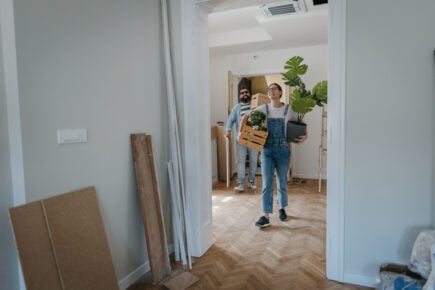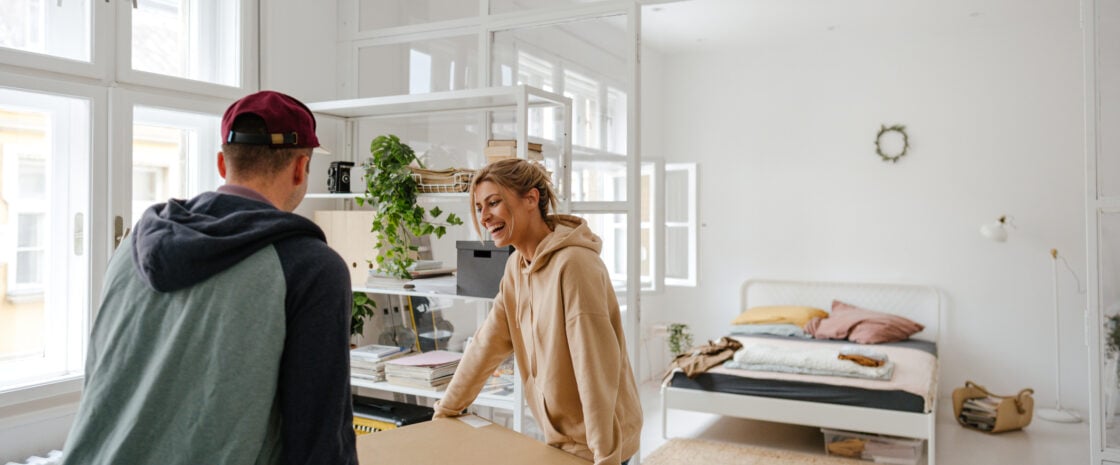Rent-to-own schemes, also called ‘rent to buy’ schemes, are a relatively new mortgage product on the Australian market, with few legitimate operators. They’ve attracted some media attention and usually for the wrong reasons, with accusations of bad actors scamming people out of their money.
Understanding how rent-to-buy schemes work can help you avoid scams and decide if this approach is right for you.
How does ‘rent to own’ work?
A rent-to-own scheme allows a buyer to rent a property and then buy it for an agreed upon price after the lease expires.
Here is a step-by-step guide to buying a property through a rent-to-own scheme.
- You select the home you want and the rent-to-own company buys the property.
- You then pay a small deposit to the rent-to-own company, such as 3% of the property’s value. Depending on the company, this deposit may or may not go towards your equity in the home.
- You pay a set, above-market rent to the rent-to-own company for the first few years while you live in the property. The rent is often higher than standard market prices because a portion of it may go towards building equity in the home. The purchase price you’ll eventually pay for the home is locked in when you begin the process. While the price is locked in, it may be subject to annual percentage increases, such as 2 to 3%.
- After a few years of renting, and before the end of the rental period, you can choose to buy the property. The equity you have built up via the deposit and rental payments essentially acts as a deposit for a traditional loan.
- If you don’t wish to buy the property, you can choose to sell it. If the property value increases, you may be able to recoup some of your money. However, if the property’s value has decreased, you could get nothing back.
Rent-to-own schemes are currently only available in select areas of the east coast of Australia.
Benefits of ‘rent to own’ schemes
Companies that offer rent-to-buy schemes may list some or all of the below benefits to the program.
- You don’t need a 20% house deposit. In order to get a competitively priced mortgage in Australia, you need at least 20% of the home’s value as a deposit. However, you’re only required to pay a small deposit, such as 3%, to enter a rent-to-buy contract.
- The price of the home is locked in from the start. If the property’s value increases during the rental period, you could potentially be buying the property for well under market value.
- You can move into your home before buying it — and make upgrades to increase the value. Restrictions from renovations may apply.
Risks of ‘rent to own’ schemes
- The rent you pay is often higher than standard market prices, which may prove difficult to cover over time. This is because the rent includes both interest and equity payments.
- There may be additional fees and costs to consider, such as interest payments and purchase option fees.
- The property value could decrease by the time it comes to buying it. This presents two issues: You could have bought it for less had you not entered the rent-to-buy contract, and, if you sell the property, you may not get back the money you put in.
- The property value could increase considerably during the rental period and you may not be able to get a loan for the home. In which case, you may be forced to sell it.
- You still need to secure a home loan after the rental period ends, which is typically done through third-party lenders, not the rent-to-buy company. Approval is not guaranteed, so you may be unable to secure a loan to buy the home. This could force you to sell the home. And, if the value has dropped, you may not recoup the money you’ve put in.
- You may be restricted to homes listed by the rent-to-buy company, or be subject to additional fees if you want the freedom to choose any home.
» MORE: Should you buy or rent?
Alternatives to rent-to-buy schemes
Before you enter a rent-to-buy contract, consider these alternatives. You may be able to get part or all of your deposit covered by government schemes and avoid the risks associated with the rent-to-buy process.
- First Home Guarantee Scheme: Applicants earning less than $125,000 ($200,000 for couples) may be able to get up to 15% of a home deposit covered by Housing Australia.
- Family Home Guarantee: Single parents and guardians may be eligible for up to 18% of a deposit covered by Housing Australia.
- Regional First Home Buyer Support Scheme: Applicants living in regional areas can get up to 15% of a deposit covered by Housing Australia.
- First Home Super Saver Scheme: Withdraw up to $50,000 from your super fund to use towards your deposit.
- First Home Owner Grant (FHOG): Get up to $30,000 to help buy or build a new home.
- Guarantor home loan: Use the equity in a loved one’s house to guarantee part or all of your deposit.
DIVE EVEN DEEPER

Renting vs Buying in Australia: Which Is Best?
If deciding between renting vs buying in Australia, the best option weighs up the state of the market and your financial circumstances.

First Home Owner Grant 2022: A State-by-State Guide
The First Home Owner Grant is a national initiative with slight changes state to state.

How Much Can I Borrow for a Home Loan?
Instead of focusing on how much the bank will let you borrow, you should focus on what you can actually afford.

Are Rent-To-Own Homes Scams?
To avoid rent-to-own home scams, beware of illegitimate sellers, predatory prices, and contracts with hidden fees and nasty surprises.

